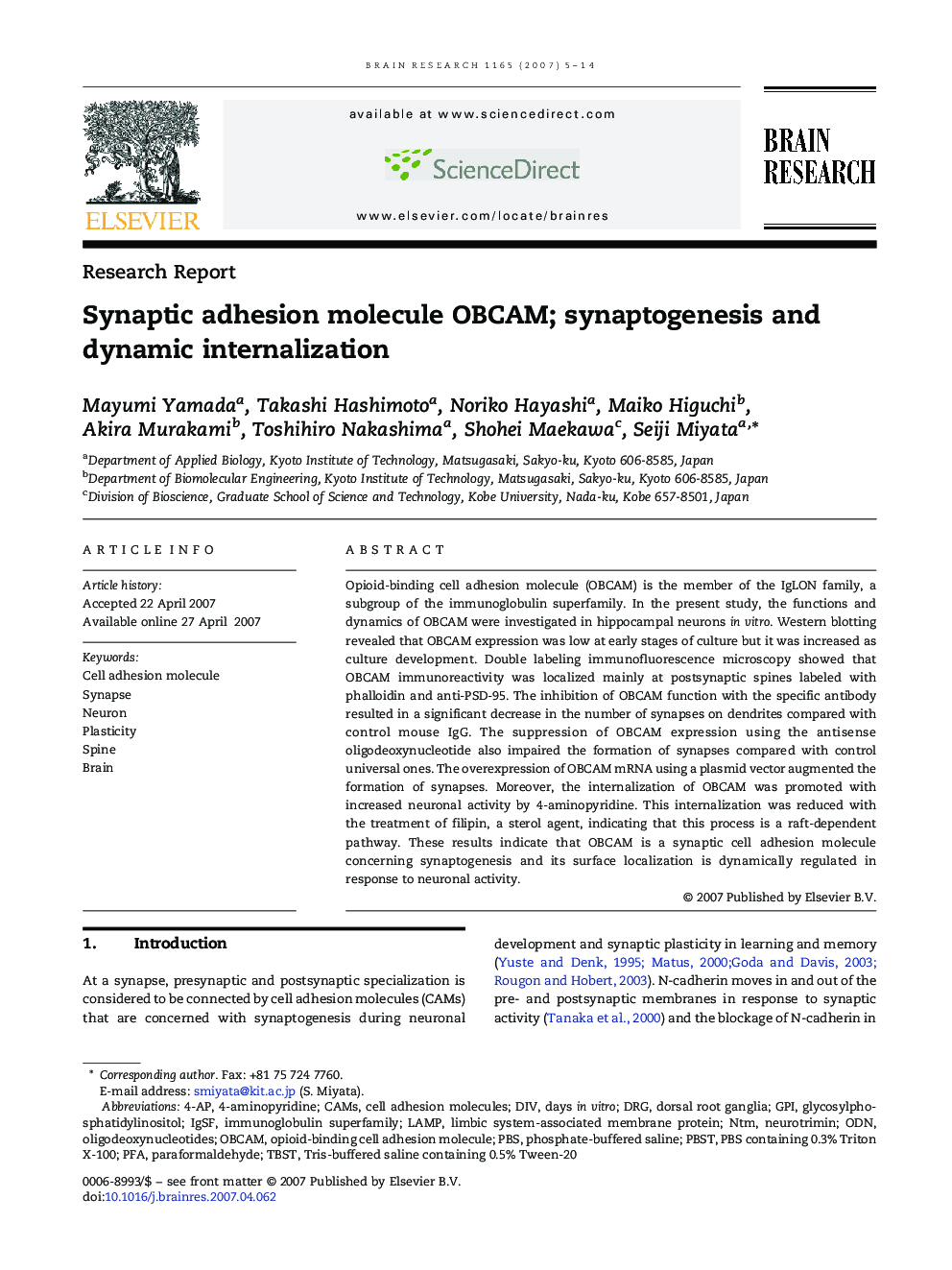| Article ID | Journal | Published Year | Pages | File Type |
|---|---|---|---|---|
| 4330853 | Brain Research | 2007 | 10 Pages |
Opioid-binding cell adhesion molecule (OBCAM) is the member of the IgLON family, a subgroup of the immunoglobulin superfamily. In the present study, the functions and dynamics of OBCAM were investigated in hippocampal neurons in vitro. Western blotting revealed that OBCAM expression was low at early stages of culture but it was increased as culture development. Double labeling immunofluorescence microscopy showed that OBCAM immunoreactivity was localized mainly at postsynaptic spines labeled with phalloidin and anti-PSD-95. The inhibition of OBCAM function with the specific antibody resulted in a significant decrease in the number of synapses on dendrites compared with control mouse IgG. The suppression of OBCAM expression using the antisense oligodeoxynucleotide also impaired the formation of synapses compared with control universal ones. The overexpression of OBCAM mRNA using a plasmid vector augmented the formation of synapses. Moreover, the internalization of OBCAM was promoted with increased neuronal activity by 4-aminopyridine. This internalization was reduced with the treatment of filipin, a sterol agent, indicating that this process is a raft-dependent pathway. These results indicate that OBCAM is a synaptic cell adhesion molecule concerning synaptogenesis and its surface localization is dynamically regulated in response to neuronal activity.
